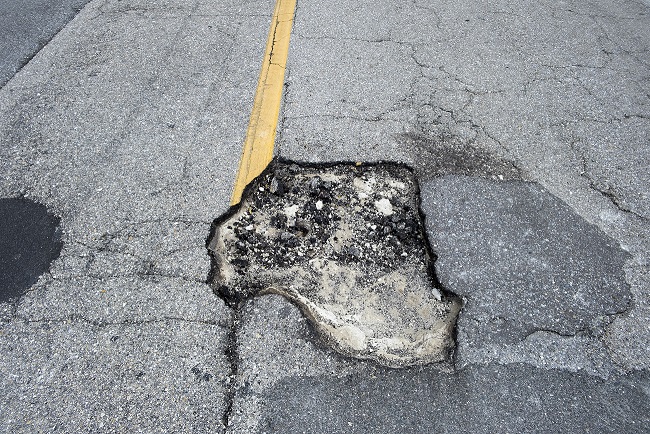Many drivers will be familiar with roadworks, closures and congestion, and it’s no secret that the more vehicles which continue to divert down lesser used routes, the more damage that will cause to overall road quality.
According to a recent survey by the Annual Local Authority Road Maintenance (ALARM), the reported backlog of carriageway repairs needed across the UK increased by almost a quarter across 2021, only to rise yet again throughout 2022 and leaving local authority highway teams in England and Wales requiring more than £14 billion to fix the backlog of road repairs.
The survey dives deeper into this, highlighting that average highway maintenance budgets have increased by 4.5% up to a staggering £25.8 million per authority, despite 53% of local authorities reporting either a cut or freeze in their highway maintenance budgets to meet rising inflation.
But what is it exactly that’s causing the increase in potholes, and how much damage do they really cause to fleet vehicles?
What are potholes?
With the ever unpredictable British weather, potholes are unfortunately very common, as they are caused by water seeping through tiny cracks in the road surface, only to then expand in those cracks as it freezes. But, when the temperature rises again and the water melts as traffic runs over the space in the cracks, the road surface then smashes and breaks, making damage worse and potholes bigger.
However, the UK government does have always-on initiatives which aim to improve road conditions, especially as potholes are commonly identified as a key contributor in congestion levels, accidental vehicle damage and ultimately, vehicle breakdowns.
How many UK roads have potholes?
ALARM statistics also confirm that just 51% of local roads are reported to be in good structural condition, but that the remainder of more than 100,000 miles could, continue to deteriorate to the point of needing to be rebuilt within the next 15 years if appropriate maintenance measures don’t take place.
It also states that 18% of the network, which equates to almost 37,000 miles, has already been recognised as having less than five years’ structural life remaining, and the Chancellor, Jeremy Hunt, has responded by announcing a further £200m for councils to fix potholes in the spring Budget.
How many potholes are being actively filled?
Over the past 12 months, ALARM reports that 1.4 million potholes have been filled. This is down from 1.7 million from the previous 12 months, but works out to the equivalent of one pothole filled every 22 second.
Can pothole damage be repaired?
It can, but it can sometimes by timely and costly, with recent data from Kwik Fit’s Pothole Impact Tracker (PIT) indicating that over the past 12 months, pothole damage forced almost 2.7million vehicles off the road and the average repair bill faced by each driver came to £127, resulting in a total cost to the motorists of £1.7bn.
What’s more, according to Kwik Fit’s data, in the year up until March 2023 a total of 13.1 million drivers suffered physical damage to their vehicle after hitting a pothole, and out of these, one in five had to do without their vehicle for more than a week whilst it was undergoing repairs.
What damage can potholes cause to fleet vehicles?
Any driver will recognise the shock of hitting a pothole, as banging into the uneven surface and sudden drop of the hole puts a lot of stress on a vehicle’s tyres and suspension.
Unfortunately though, whilst many modern vehicles are built to withstand this strain, there’s always going to be chance that an unexpected pothole could damage a tyre to the point of puncture, add excess wear to suspension components or in some cases even break them entirely.
Larger or deeper potholes also have the potential to damage alloy wheels and components underneath a vehicle too, but should a driver notice anything unusual with a commercial vehicle after a hitting a pothole, it’s important to check with a specialist repairer as soon as possible.
How can Egertons help rescue and recover fleet vehicles following pothole damage?
No matter what, roads always demand a drivers’ full attention, and whilst it’s not always possible to safely avoid hitting a pothole, taking unnecessary risks can have serious consequences, and in the worst case scenario where a vehicle is involved in an accident or breakdown because of one, it’s imperative to have the vehicle recovered as safely and as quickly as possible.
At Egertons, we’re one of the UK’s leading vehicle rescue and recovery operators, offering a 24/7/365 service across the country. Our services stretch from breakdown recovery to specialist assistance, and our sophisticated triage process allows us to deploy the exact right vehicles, first time.
This is supported by our 24-hour control room, 300-strong fleet, vast range of equipment available on hand and the technology it is equipped with, making us the preferred vehicle rescue and recovery operator for UK fleets to rely on, no matter what.
We’re ready when you are.


